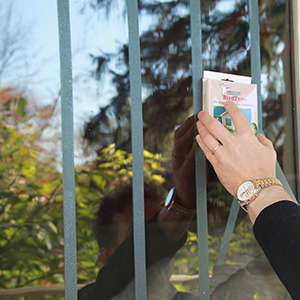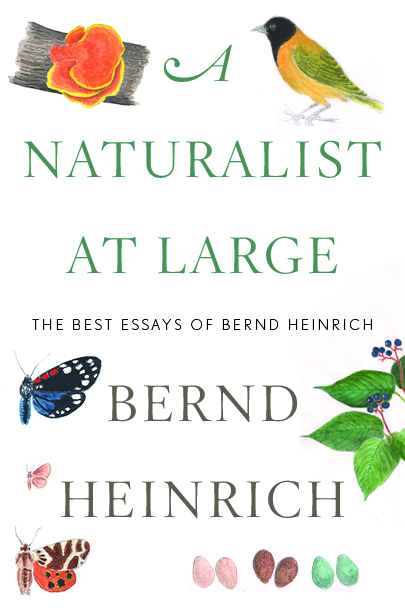
Published June 4, 2021, in the Wyoming Tribune Eagle, “2021 Big Day brings in birds and birders”
By Barb Gorges
It’s a chicken or the egg conundrum. Which comes first, lots of birds or lots of birders?
It’s true that the more birders there are out looking, the more birds are seen. But the way to get more birders out to look for them is for there to be more bird reports coming in. That piques interest and more birders go out looking instead of doing mundane household chores.
Mark, my husband, was out nearly every morning the first two weeks in May to one of several of his favorite hotspots: Wyoming Hereford Ranch, Lions Park (both are Wyoming Important Bird Areas), Laramie County Community College (the pond areas) or F.E. Warren Air Force Base (ponds there too).
When he came home, he’d give me a report on what interesting migrants he’d seen and show me photos he’d taken before adding them to the checklists of birds he’d seen and entered through the eBird.org phone app. He’d tell me too, who else he’d met, mostly birding friends, but sometimes visitors.
In the evening he liked to check eBird to see what sightings local birders had entered for the day. And he’d check birdcast.info to see if birds were going to be making a strong migratory push through our area overnight—and coming to earth here to rest and refuel in the morning.
Every year, for 60-plus years, the Cheyenne – High Plains Audubon Society designates a date for its Big Day Bird Count and hopes to hit the biggest migratory push. It’s usually the third Saturday in May. Sometimes we’ve had icy storms and wonder if we should pick a later date. Sometimes eBird reports show that there just isn’t a peak to the migration. We wonder too if climate change means we should move it up a week.
This year we had a good lead-up that encouraged more people to be out on our Big Day, May 15. We had a couple of sharper than average birders joining us too, Nathan Pieplow, author of the “Peterson Field Guide to Bird Sounds of Western North America,” and his friend, Will Anderson.
Nathan signed books the evening before. It was going to be an outdoor event but thank goodness the Hales family lent us one of the WHR barns as backup since a good gully washer blew in.
Saturday morning was chilly and foggy, but the birds and birders were out. We weren’t all in one big group, but we would get the scoop on cool birds from each other when we met up.
The next day, Mark started compiling the list of birds, looking at checklists on eBird for sightings in the Cheyenne vicinity.
At least 30 people submitted, or were included on, 74 checklists. I submitted a couple just for our bird feeders when we took a break at home.
It was one of the best Big Days in Cheyenne in a while: 136 species. And the warbler count was very good: 12 species.
Sunday, there were still a lot of migratory birds in town including 50 pine siskins under our thistle feeder for an hour.
But the show was over by Monday—both out in the field and at our now deserted feeder.
This year, migration seems to have peaked on the Saturday we picked, making it like Christmas in May.

Cheyenne Big Day Bird Count, May 15, 2021
Compiled from 74 (51 unique) eBird lists. At least 30 people participated.
136 Species
Snow Goose
Canada Goose
Wood Duck
Blue-winged Teal
Cinnamon Teal
Northern Shoveler
Gadwall
Mallard
Northern Pintail
Green-winged Teal
Redhead
Lesser Scaup
Bufflehead
Ruddy Duck
Pied-billed Grebe
Horned Grebe
Eared Grebe
Western Grebe
Rock Pigeon
Eurasian Collared-Dove
Mourning Dove
American Coot
Black-necked Stilt
American Avocet
Semipalmated Plover
Killdeer
Marbled Godwit
Least Sandpiper
Long-billed Dowitcher
Wilson’s Phalarope
Red-necked Phalarope
Spotted Sandpiper
Willet
Ring-billed Gull
California Gull
Double-crested Cormorant
American White Pelican
Great Blue Heron
Black-crowned Night-Heron
White-faced Ibis
Turkey Vulture
Northern Harrier
Sharp-shinned Hawk
Cooper’s Hawk
Broad-winged Hawk
Swainson’s Hawk
Red-tailed Hawk
Great-horned Owl
Burrowing Owl
Belted Kingfisher
Downy Woodpecker
Hairy Woodpecker
Northern Flicker
American Kestrel
Peregrine Falcon
Western Wood-Pewee
Willow Flycatcher
Least Flycatcher
Gray Flycatcher
Dusky Flycatcher
Say’s Phoebe
Cassin’s Kingbird
Western Kingbird
Eastern Kingbird
Plumbeous Vireo
Warbling Vireo
Loggerhead Shrike
Blue Jay
Black-billed Magpie
American Crow
Common Raven
Mountain Chickadee
Horned Lark
Northern Rough-winged Swallow
Tree Swallow
Violet-green Swallow
Bank Swallow
Barn Swallow
Cliff Swallow
Ruby-crowned Kinglet
Red-breasted Nuthatch
Blue-gray Gnatcatcher
Rock Wren
House Wren
European Starling
Gray Catbird
Brown Thrasher
Northern Mockingbird
Townsend’s Solitaire
Veery
Swainson’s Thrush
Hermit Thrush
American Robin
House Sparrow
House Finch
Pine Siskin
Lesser Goldfinch
American Goldfinch
Chipping Sparrow
Clay-colored Sparrow
Brewer’s Sparrow
Lark Sparrow
White-crowned Sparrow
Vesper Sparrow
Savannah Sparrow
Song Sparrow
Lincoln’s Sparrow
Green-tailed Towhee
Spotted Towhee
Yellow-headed Blackbird
Western Meadowlark
Orchard Oriole
Bullock’s Oriole
Red-winged Blackbird
Brown-headed Cowbird
Brewer’s Blackbird
Common Grackle
Great-tailed Grackle
Northern Waterthrush
Common Yellowthroat
Orange-crowned Warbler
Nashville Warbler
Virginia’s Warbler
MacGillivray’s Warbler
Yellow Warbler
Chestnut-sided Warbler
Blackpoll Warbler
Yellow-rumped Warbler
Townsend’s Warbler
Wilson’s Warbler
Western Tanager
Rose-breasted Grosbeak
Black-headed Grosbeak
Blue Grosbeak
Lazuli Bunting
Indigo Bunting















 Try these bird and wildlife books for winter reading and gift giving
Try these bird and wildlife books for winter reading and gift giving “Warblers & Woodpeckers, A Father-Son Big Year of Birding” by Sneed B. Collard III was a great read-aloud. For two weeks every evening I read it to my husband, Mark, while he washed the dishes–a long-standing family tradition.
“Warblers & Woodpeckers, A Father-Son Big Year of Birding” by Sneed B. Collard III was a great read-aloud. For two weeks every evening I read it to my husband, Mark, while he washed the dishes–a long-standing family tradition. Two Wyoming wildlife biologists, Matthew Kauffman and Bill Rudd, who have spoken at Cheyenne Audubon meetings on the subject, are part of the group that put together “Wild Migrations, Atlas of Wyoming’s Ungulates.” I ordered a copy sight unseen.
Two Wyoming wildlife biologists, Matthew Kauffman and Bill Rudd, who have spoken at Cheyenne Audubon meetings on the subject, are part of the group that put together “Wild Migrations, Atlas of Wyoming’s Ungulates.” I ordered a copy sight unseen. Thanks, Houghton Mifflin Harcourt, for sending me a copy of the newly revised “Peterson Field Guide to Western Reptiles & Amphibians” by Robert C. Stebbins and Samuel M. McGinnis to review. I now know that what friends and I nearly stepped on while hiking last summer was a prairie rattlesnake, one of 12 kinds of rattlers found in the west.
Thanks, Houghton Mifflin Harcourt, for sending me a copy of the newly revised “Peterson Field Guide to Western Reptiles & Amphibians” by Robert C. Stebbins and Samuel M. McGinnis to review. I now know that what friends and I nearly stepped on while hiking last summer was a prairie rattlesnake, one of 12 kinds of rattlers found in the west. I would be doing local photographer Pete Arnold a disservice if I didn’t remind you that you can find our book, “Cheyenne Birds by the Month” at the Cheyenne Botanic Gardens, Wyoming State Museum, Cheyenne Depot Museum, Riverbend Nursery and PBR Printing. People tell us they are using Pete’s photos to identify local birds. I hope the experience encourages them to pick up a full-fledged bird guide someday by Peterson, Floyd, Sibley or Kaufman.
I would be doing local photographer Pete Arnold a disservice if I didn’t remind you that you can find our book, “Cheyenne Birds by the Month” at the Cheyenne Botanic Gardens, Wyoming State Museum, Cheyenne Depot Museum, Riverbend Nursery and PBR Printing. People tell us they are using Pete’s photos to identify local birds. I hope the experience encourages them to pick up a full-fledged bird guide someday by Peterson, Floyd, Sibley or Kaufman.







 Enjoy reading nature writing in three styles: essays, trail guide and guide to field guides
Enjoy reading nature writing in three styles: essays, trail guide and guide to field guides The Guide to Walden Pond, An Exploration of the History, Nature, Landscape, and Literature of One of America’s Most Iconic Places, Robert M. Thorson, 2018, $17, 250 pages, full color.
The Guide to Walden Pond, An Exploration of the History, Nature, Landscape, and Literature of One of America’s Most Iconic Places, Robert M. Thorson, 2018, $17, 250 pages, full color. Peterson Guide to Bird Identification—in 12 Steps, Steve N.G. Howell and Brian Sullivan, 2018, $18 152 pages, full-color.
Peterson Guide to Bird Identification—in 12 Steps, Steve N.G. Howell and Brian Sullivan, 2018, $18 152 pages, full-color. 

 Dunne is co-author of “Hawks in Flight: A Guide to Identification of Migrant Raptors.” Last year he authored a new book with Kevin T. Karlson, “Birds of Prey, Hawks, Eagles, Falcons, and Vultures of North America.”
Dunne is co-author of “Hawks in Flight: A Guide to Identification of Migrant Raptors.” Last year he authored a new book with Kevin T. Karlson, “Birds of Prey, Hawks, Eagles, Falcons, and Vultures of North America.”